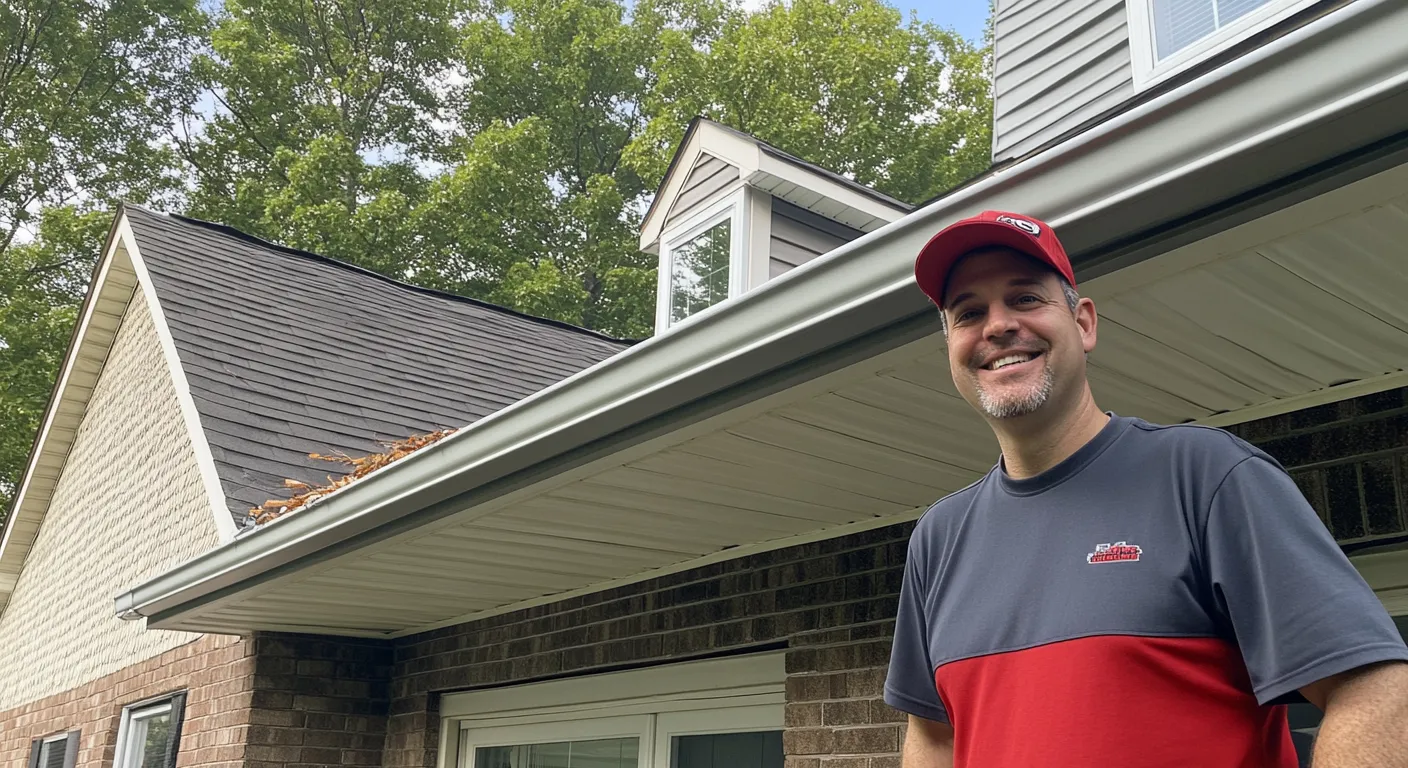Want to take on a rewarding DIY project and give your home a fresh look? Installing new gutters might be just the ticket! While it involves some planning and effort, a successful DIY gutter installation not only saves you money but also provides the satisfaction of a job well done. This comprehensive guide will walk you through the entire process, ensuring your new gutter system functions flawlessly and enhances your home’s curb appeal.
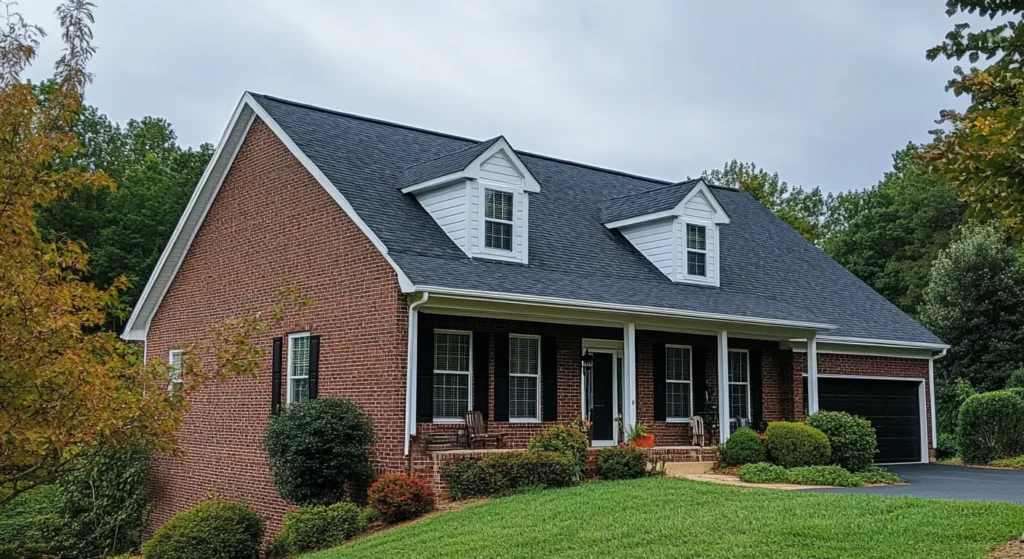
Understanding the Basics of Gutter Installation
Gutter installation essentially involves channeling rainwater collected by your roof away from your home’s foundation. This is achieved by attaching gutters, typically made of aluminum, to the fascia boards – the vertical boards running directly beneath your roofline. A slight downward slope towards downspouts ensures efficient water flow, preventing potential issues like basement flooding, soil erosion, and foundation damage.
Gutter replacement often becomes necessary due to wear and tear, leaks, or outdated materials. While many homeowners opt for DIY gutter installation, it’s crucial to carefully consider the project’s complexity. Factors such as roof height, gutter length, and the need for specialized tools can influence your decision.
Contact UsThe Importance of Proper Gutter Installation
Proper gutter installation is more than just a cosmetic enhancement for your home – it’s a crucial aspect of protecting your property from water damage. When gutters are installed correctly, they efficiently channel rainwater away from your home, safeguarding its foundation, walls, and landscape.
On the other hand, improper installation can lead to a cascade of problems. Gutters with insufficient slope can overflow, causing water to seep into your home’s structure, leading to costly repairs. Incorrectly installed downspouts may fail to direct water far enough from your home, resulting in basement flooding or foundation issues.
If you’re uncertain about your DIY skills, seeking assistance from professional gutter installation services is always a wise choice. Their expertise ensures your gutters function optimally, providing long-term protection for your home’s integrity.
Types of Gutters: Seamless, Alcoa, and Rain Drop Gutter Guards
Choosing the right type of gutter is crucial for an efficient and long-lasting system. Seamless gutters, as the name suggests, are custom-made on-site to perfectly fit your home’s dimensions, minimizing the risk of leaks. Alcoa gutters, known for their durability and weather resistance, are a popular choice for homeowners seeking a reliable solution.
Equally important is considering gutter guards. These handy additions prevent leaves, twigs, and other debris from clogging your gutters, reducing the need for frequent cleaning and ensuring optimal water flow. Rain Drop Gutter Guards, in particular, are renowned for their effectiveness in keeping gutters clear, providing homeowners with peace of mind.
Here are some popular gutter options:
- Seamless Gutters: Minimizes leaks; available in various colors.
- Alcoa Gutters: Durable aluminum construction; known for longevity.
- Rain Drop Gutter Guards: Effectively blocks debris; reduces maintenance.
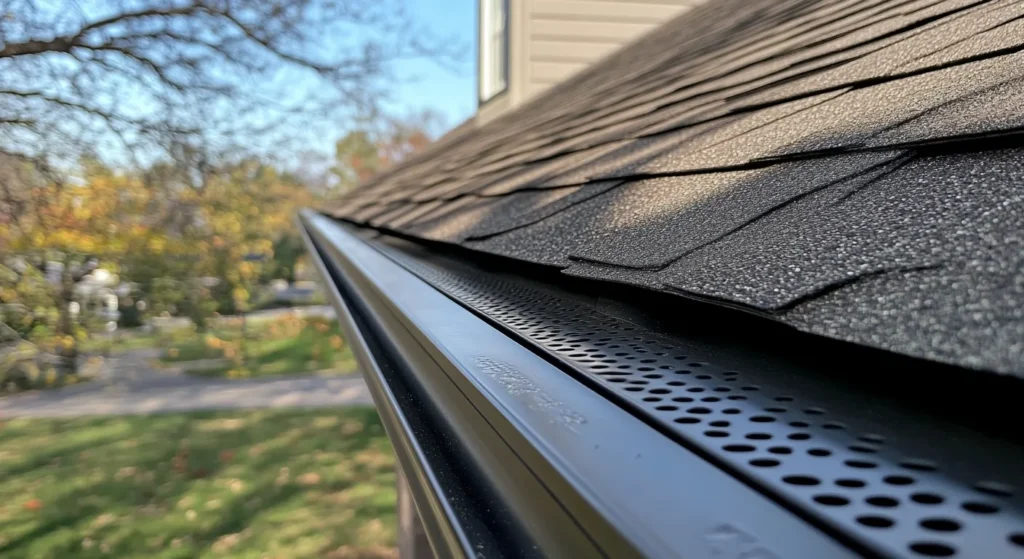
Preparing for Your DIY Gutter Installation Project
Before embarking on your DIY gutter installation, thorough preparation is key. This involves assessing your home’s gutter needs, gathering the necessary tools and materials, and prioritizing safety measures.
Start by evaluating the existing gutter system, noting any damage or areas requiring replacement. Measure the lengths requiring new gutters and determine the number of downspouts needed for efficient drainage. Once you have a comprehensive understanding of your project’s scope, you can confidently proceed to gather the necessary supplies.
Evaluating Your Home’s Gutter Needs
To ensure you purchase the right materials, you must first determine your home’s specific gutter needs. An important factor to consider is the roof pitch, which influences the size of the gutter and the number of downspouts required. A steeper pitch will generate a faster water flow, necessitating larger gutters to handle the volume.
If you’re someone who loves tackling a lot of DIY projects, installing gutters might be right up your alley. However, it’s essential to realistically assess the job’s demands. Working at heights can be challenging, and handling long, heavy gutter sections requires both skill and caution.
Thoroughly measuring the lengths requiring new gutters is crucial for a successful installation. Don’t forget to account for outside corners and end caps, ensuring you purchase enough materials to complete the project seamlessly.
Tools and Materials Checklist
Once you’ve assessed your home’s needs, it’s time to gather the tools and materials for your DIY gutter installation project. A trip to your local hardware store should provide most of what you need, from aluminum gutters and downspouts to fasteners and sealants.
Essential tools for this project include a tape measure for accurate measurements, tin snips for cutting the gutters to size, a pop rivet gun for securing joints, and a level to ensure proper slope. Additional items such as a ladder, safety glasses, and work gloves are also crucial for ensuring a safe and successful installation.
Here is a list of tools and materials you will likely need:
- Tape measure: For precise measurements of gutter length and downspout placement.
- Tin snips: Essential for cutting aluminum gutters to the desired size.
- Pop rivet gun: Provides a secure and watertight seal for joining gutter sections.
- Gutter hangers: Used to attach the gutters to the fascia boards of your home.
- Sealant: Prevents leaks at joints and seams, ensuring the longevity of your gutter system.
Step-by-Step Guide to DIY Gutter Installation

Now that you’ve gathered the necessary tools and materials, let’s dive into the step-by-step process of DIY gutter installation. It’s essential to follow each step carefully, ensuring accuracy and precision throughout the process.
From planning and measuring your gutter system to installing gutters and downspouts, each stage plays a vital role in the success of your project. Remember to prioritize safety and take your time, double-checking measurements and connections to guarantee a long-lasting and effective gutter system.
Step 1: Planning and Measuring Your Gutter System
Before you pick up a saw or a rivet gun, meticulously plan and measure your gutter system to ensure a successful installation. Start by identifying the location for your downspout outlets, considering factors such as landscaping and drainage patterns. It’s generally recommended to have one downspout for every 30 to 40 feet of gutter.
Next, measure the lengths requiring new gutters, carefully noting outside corners and end caps. If your fascia boards are uneven, snap a chalk line to mark the desired gutter slope, typically 1/4 inch for every 10 feet of gutter. Accurate measurements are crucial for minimizing waste and ensuring a seamless installation.
Mark the location of your downspout outlets on the fascia board, using a level to ensure they are plumb. Remember to account for the downspout outlet’s size when measuring your gutter sections, ensuring a snug fit.
Step 2: Choosing the Right Type of Gutter for Your Home
Choosing the appropriate gutter style for your home depends on factors such as roof size, rainfall intensity, and aesthetic preferences. Seamless gutters, typically made from aluminum, are a popular choice for their durability, low maintenance, and sleek appearance. These gutters are custom-made on-site to perfectly fit your home’s dimensions, minimizing the risk of leaks.
Aluminum gutters, known for their resistance to rust and corrosion, are a cost-effective and long-lasting option. They come in various colors to match your home’s exterior, enhancing its curb appeal.
While seamless gutters offer numerous advantages, they often require professional installation. However, if you’re comfortable working with basic tools and have a keen eye for detail, installing sectional gutters yourself can be a rewarding DIY project.
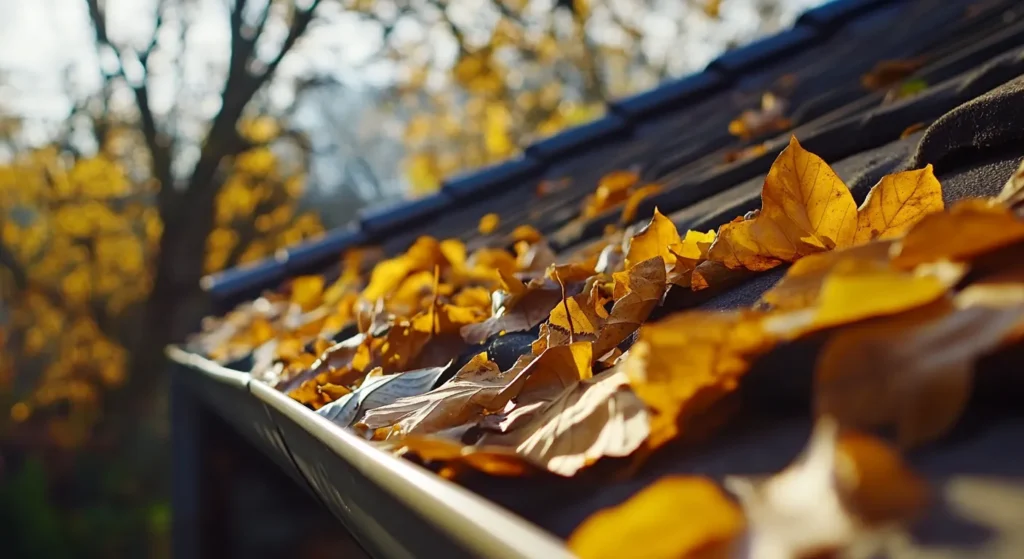
Step 3: Installing Gutters and Downspouts
Begin by installing the gutter hangers, spacing them approximately 2 feet apart along the fascia boards. Use a level to ensure each hanger is installed straight and securely fastened to the fascia.
Next, attach the gutter sections, starting at the highest point and working your way down toward the downspout outlet. Overlap each gutter section by a few inches and secure them to the hangers using rivets or screws. If you’re working with sectional gutters, apply sealant to each joint to prevent leaks.
Finally, install the downspouts, attaching them to the downspout outlets on the gutters and securing them to the wall using downspout brackets. Make sure to direct the downspouts away from your home’s foundation, preventing water from pooling and potentially causing damage.
Step 4: Adding Gutter Guards for Maintenance Ease
Once your DIY gutters are securely in place, consider adding gutter guards to minimize future maintenance. These protective covers prevent leaves, twigs, and other debris from clogging the gutters, ensuring optimal water flow and reducing the frequency of cleaning.
Gutter guards come in various materials and designs, each offering unique advantages. Mesh gutter guards, for instance, effectively block large debris while allowing water to pass through. Solid gutter guards, on the other hand, provide a complete barrier, preventing even the smallest particles from entering the gutter system.
When choosing gutter guards, consider factors like the manufacturer’s warranty, material durability, and ease of installation. Properly installed gutter guards not only enhance the efficiency of your DIY gutters but also extend their lifespan, saving you time and effort in the long run.
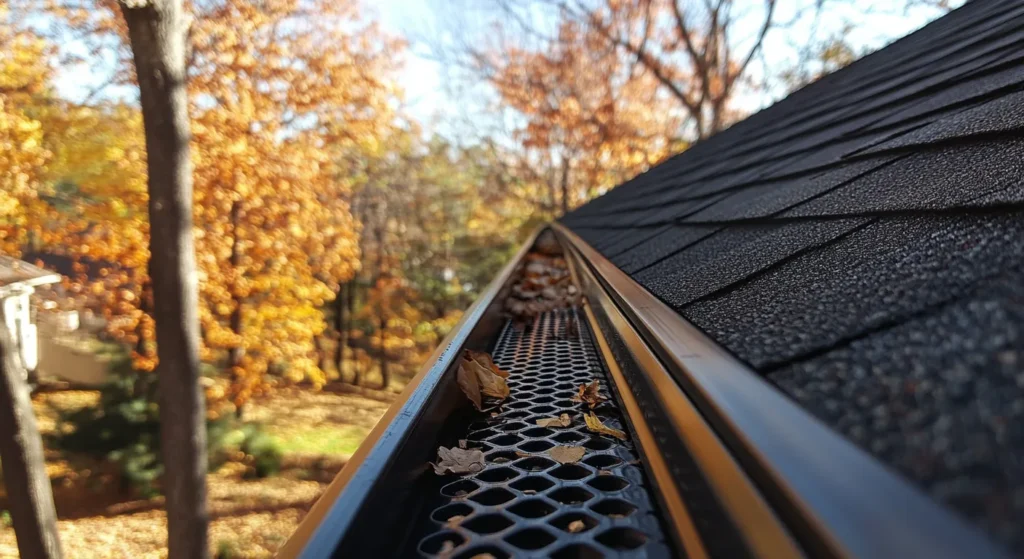
Why Trust MY Pittsburgh Gutters for Your Gutter Needs
While DIY gutter installation can be fulfilling, certain situations call for the expertise of seasoned professionals. That’s where MY Pittsburgh Gutters comes in. As a leading gutter installation company in the region, we bring years of experience and a commitment to quality to every project.
Our team of skilled professional gutter installers utilizes top-tier materials and efficient techniques to deliver exceptional results. We’re proud holders of the BBB A+ Certification, a testament to our dedication to customer satisfaction and ethical business practices. When you choose MY Pittsburgh Gutters, you’re guaranteed a seamless experience and long-lasting gutter solutions tailored to your home’s unique requirements.
Our Expertise with Rain Drop Gutter Guards
At MY Pittsburgh Gutters, we understand the importance of protecting your investment. That’s why we specialize in the installation of Rain Drop Gutter Guards, a premium gutter protection system designed to keep your rain gutters flowing freely, season after season.
Rain Drop Gutter Guards effectively prevent clogs from leaves, pine needles, pests, and other debris, eliminating the hassle of frequent cleaning and safeguarding your home from potential water damage. Their durable construction and innovative design ensure long-lasting performance, providing you with peace of mind and a cleaner, safer home.
Call Us (412) 657-8460Seamless Gutter Options and BBB A+ Certification
MY Pittsburgh Gutters proudly offers seamless gutter options, crafted on-site to perfectly match your home’s dimensions. Unlike traditional sectional gutters, seamless gutters eliminate potential leak points at seams, providing superior protection against water damage and enhancing your home’s curb appeal with their sleek, continuous design.
Our commitment to excellence extends beyond our products and services. As a BBB A+ Certified gutter installation company, we adhere to the highest ethical standards in the industry, ensuring transparency, integrity, and customer satisfaction in all our dealings.
Conclusion
In conclusion, DIY gutter installation can be a rewarding project with proper planning and execution. By understanding the basics, evaluating your home’s needs, and following a step-by-step guide, you can enhance your home’s functionality and curb appeal. Remember to prioritize safety and invest in quality materials for long-lasting results. For expert assistance and a seamless gutter experience, trust MY Pittsburgh Gutters. Whether you are a beginner or looking to upgrade, our expertise and top-notch products like Rain Drop Gutter Guards ensure a reliable gutter solution. Start your project today for a home that’s well-protected and visually appealing.
Frequently Asked Questions
Can I install gutters myself as a complete beginner?
While DIY gutter installation is achievable for many homeowners, complete beginners should assess their comfort level working at heights and using tools. If you’re unsure, consult with a professional for guidance or assistance.
What materials and tools do I need for a DIY gutter installation project?
Essential tools include a tape measure, tin snips, a pop rivet gun, gutter hangers, and a level. You’ll also need aluminum gutters, downspouts, sealant, screws, and safety gear, all available at your local hardware store.
Are there any safety precautions I should take when installing gutters on my own?
Always prioritize safety when working on a roof. Use a sturdy ladder and ensure its stability. Wear protective gear like gloves and safety glasses. If heavy rainfall or strong winds occur, postpone the installation.

